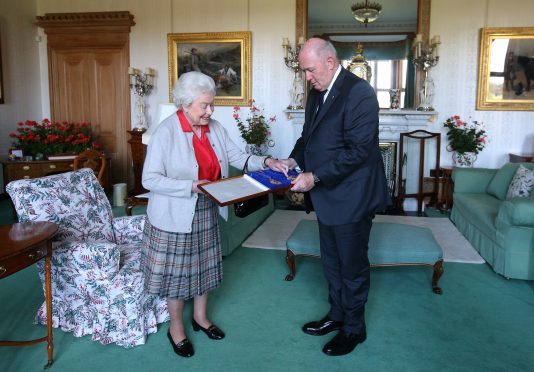Secret documents have revealed the royal family have banned commoners from wearing their official tartan.
The Balmoral tartan – designed by Prince Albert in 1853 – has been worn by every British monarch since Queen Victoria.
Its distinctive grey, black and red plaid was designed to match the colours of granite in Aberdeenshire.
But now documents have revealed a ban dating back 80 years on the tartan being bought, manufactured or even worn by the public without the approval of Buckingham Palace.
The ban – introduced in January 1937 – was revealed in newly public documents being displayed at the National Archives at Kew in London.
They show that shortly after George VI began his reign, Conachie & Co, a clothing wholesaler based in Edinburgh, contacted him to inquire if the elite tartan could be manufactured and sold.
Their letter read: “We are tartan specialists and have been receiving inquiries from all parts of the world.”
But they received a stern response from Sir Ulick Alexander, who managed the privy purse at the time.
He replied: “I write to inform you that the tartan that the King and royal family have adopted is purely personal and private to His Majesty and the royal family and can, in no circumstances, be worn by other people, or purchased by them from any source and cannot, therefore, be manufactured for general sale.”
A spokeswoman for the palace confirmed that the decree remains in place today.
She said: “The reigning monarch and other members of the royal family may wear the Balmoral tartan in accordance with the wishes of the sovereign.”
According to the palace the only other person outside the royal family permitted to wear the tartan is the sovereign’s piper.
Even those working on the Queen’s Aberdeenshire estate at Balmoral on Deeside do not wear the distinctive plaid. instead donning the grey coloured Balmoral tweed.
Tartan was banned in 1745 following the Jacobite wars, however the ban was overturned when George IV visited Edinburgh in 1822.
